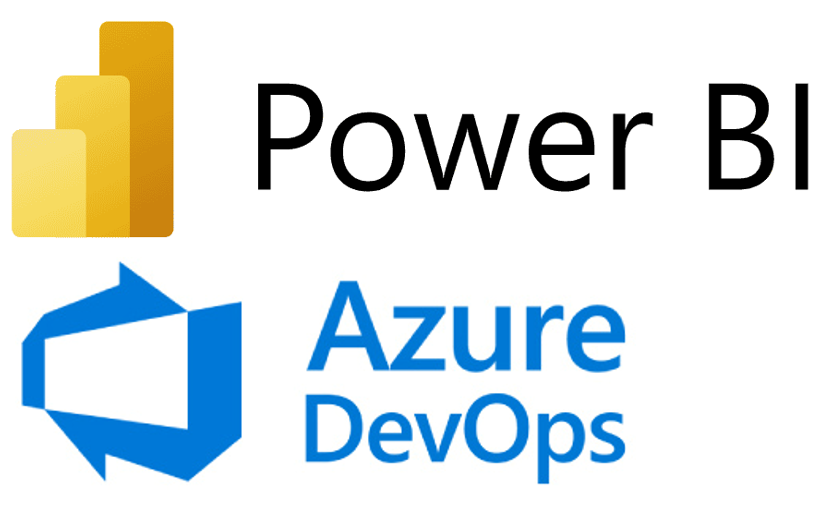Power BI Deployment Accelerator: Two Paths to True CI/CD – with Azure DevOps or Fabric in the Lead

Introduction
Power BI has become the heart of modern reporting landscapes. Yet, as projects scale, multiple developers collaborate, and deployments span multiple environments, traditional manual processes quickly reach their limits.
Missing automation, manual exports, and unclear version control often lead to errors, time loss, and governance issues.
This is where the synvert Power BI Accelerator comes in. It provides a standardized, audit-proof, and scalable solution that brings true CI/CD capabilities to Power BI — with two distinct approaches: Azure DevOps in the lead or Microsoft Fabric in the lead.
The goal: fully automate the lifecycle of reports, datasets, and dashboards so that development, testing, and production flow seamlessly together.
Why a Power BI Accelerator Is Needed
Both Azure DevOps and Microsoft Fabric offer components for deployment and versioning. But neither provides an opinionated, end-to-end governance model.

- Azure DevOps offers deep automation but lacks domain-specific conventions for Power BI governance.
- Fabric simplifies deployment but has limited role separation and historization capabilities.
Enter the synvert Accelerator:
It bridges these worlds by defining not only how to deploy Power BI, but who owns which part of the process — aligning CI/CD automation with enterprise governance.
Two Variants – One Governance Core
The Accelerator comes in two architectural variants that can be selected based on an organization’s maturity and technology landscape:

- Azure DevOps in the Lead – CI/CD-driven deployment with strong governance and RBAC alignment.
- Fabric in the Lead – native Fabric Deployment Pipelines with Azure DevOps used purely for historization and traceability.
While the technical stack differs, both share the same governance and RBAC philosophy.
Variant 1 – Azure DevOps in the Lead
In this approach, Azure DevOps orchestrates the complete lifecycle — from code commits to validated deployments across development, integration, and production stages.
Power BI becomes the endpoint, with the Accelerator handling parameterized configuration, dataset connection updates, and workspace mapping through REST APIs.

What sets it apart:
Unlike a generic DevOps setup, the synvert Accelerator includes a governance layer that defines roles, responsibilities, and RBAC assignments across the deployment chain.
For example:
- Developers manage powerpoint files and metadata in source control.
- CI/CD pipelines enforce naming policies and approvals.
- Power BI admins retain control over production promotion.
This separation of duties ensures compliance, transparency, and repeatability across teams.
Power BI Accelerator Key Benefits:
- Proven across enterprise clients in finance, retail, and manufacturing
- Full CI/CD automation aligned with RBAC best practices
- Configurable deployment templates and metadata-driven environments
- Audit-ready governance model
- Reusable DevOps patterns for multiple projects
Variant 2 – Power BI Fabric in the Lead
In this variant, Microsoft Fabric’s Deployment Pipelines are the central control mechanism.
Fabric handles development, testing, and production promotion natively within the Power BI Service — without additional approval steps or automation logic in Azure DevOps.
Azure DevOps is used only for historization — serving as a single source of truth for all Power BI artifacts.
Each version of a report, dataset, or parameter file is stored automatically, ensuring traceability and rollback capability if required.
No additional CI/CD orchestration or governance workflows run here — Fabric’s native model is intentionally kept simple.
Power BI Accelerator Key Benefits:
- Native Fabric deployment experience
- Lightweight setup with minimal overhead
- Centralized historization and version tracking in Azure DevOps
- Ideal for organizations prioritizing agility over complex pipeline logic
- Fast onboarding for business-led Power BI teams
This variant fits customers who primarily rely on Fabric’s built-in deployment process but still want DevOps-grade traceability and auditability of all Power BI assets.
Governance and RBAC as the Core Value
The real value of the Accelerator lies in its governance model, not just its automation.
It provides a structured framework defining:
- Ownership and accountability across environments (DEVL, INTG, PROD)
- RBAC roles for least-privilege access and approval authority
- Naming conventions and metadata standards for auditability
- Cross-team responsibility mapping for data engineers, analysts, and administrators
This approach transforms Power BI from a tool into an operating model — combining CI/CD with enterprise-grade governance principles.
Built from Real-World Experience
The synvert Power BI Accelerator is the result of accumulated best practices across numerous enterprise projects in finance, insurance, retail and more.
Each customer environment contributed insights — from access control challenges to approval bottlenecks and deployment standardization.
The outcome is a proven, reusable framework that ensures consistent quality, compliance, and efficiency across Power BI implementations.
Roadmap and Outlook
As Microsoft expands Fabric’s CI/CD and service principal capabilities, both variants will continue to converge.
The Accelerator is designed for adaptability — allowing customers to evolve from a lightweight Fabric-driven setup to a fully automated Azure DevOps-based process when ready.
This flexibility ensures long-term alignment with Microsoft’s Power BI roadmap.
Conclusion
The synvert Power BI Accelerator is not just a set of scripts or templates.
It’s a complete governance and deployment model for Power BI — combining automation, RBAC, and enterprise governance into one coherent framework.
Whether Azure DevOps or Fabric takes the lead, the foundation remains the same:
- clear responsibilities,
- structured access management,
- coherent infrastructure,
- and a unified, compliant deployment process.
By consolidating years of project experience into one standardized accelerator, synvert enables organizations to turn Power BI into a governed, scalable, and future-proof analytics platform — bridging the gap between agility and accountability.





















